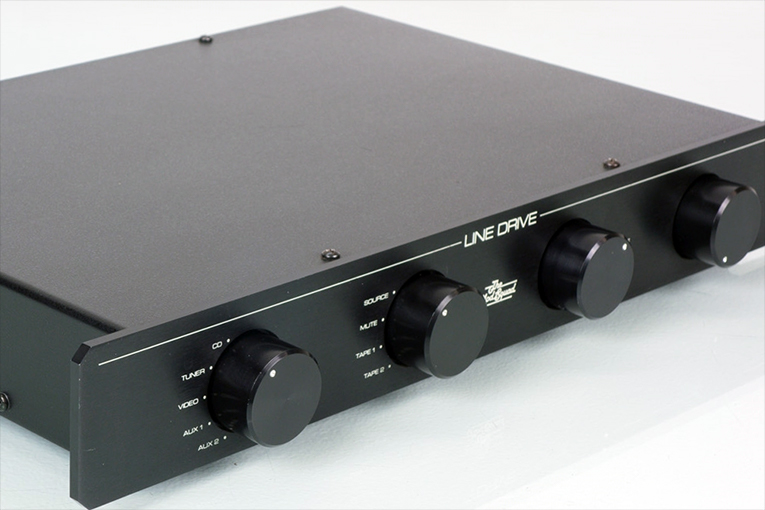 They say a change is as good as a rest. With hi-fi, a complete change ranks right up there with a hit of Viagra. It’s not merely ear-opening to replace your entire system in one fell swoop; it’s revelatory, shocking and, yes, invigorating. As I found out this week.
They say a change is as good as a rest. With hi-fi, a complete change ranks right up there with a hit of Viagra. It’s not merely ear-opening to replace your entire system in one fell swoop; it’s revelatory, shocking and, yes, invigorating. As I found out this week.
Let’s say, for the sake of argument, that most of us -- even hi-fi retailers or reviewers who have a steady flow of new components to assess -- leave our systems intact for great periods of time. Even upgrading a single component per year is probably above the average. For a normal user, once he or she has a satisfying system, the rule is “if it ain’t broke . . .” unless one is profligate or simply addicted to buying hi-fi on a frequent basis.

As reviewers need a constant frame of reference, they also need stability. My system changes so slowly that my cables are three years old, my main turntable is 27, my preamp is new, but is the latest in a series going back decades, etc. It enables me to insert whatever I’m reviewing, e.g., a power amp, into the system for an audible change that is instantly and unmistakably apparent. This is a practical shortcut, not a cop-out. If I were reviewing cars, I’d always use the same roads.
Because of a perfect storm of events, I found myself relieved of my speakers and amplifier on the same day, as the former are replaced with a current model and the latter undergoes a minor repair. I also had reason to change cartridges and AC cables. I took the opportunity to clean my racks of accumulated schmutz; disconnected, cleaned, and reconnected all wires; and found myself listening to a system that had only the wires and my venerable Marantz DV8300 SACD player, EAT E-Glo phono stage, and SME Model 30/12 tunrtable in common with what I had been using for the previous God-knows-how-long.
What I changed to is not relevant, as this is not a review of the system I ended up with, only to say that the temporary amplifier is a £25,000 solid-state integrated, feeding a pair of small speakers with a £800-per-pair price tag. A glorious mismatch, but again, not the point. It could have been anything from a 50-year-old pair of Quad IIs and the latest MartinLogans to a PS Audio Sprout and BBC LS3/5As.
What is the point is that every element of standard practice was thrown out the window for expediency and necessity. It totally precluded any hopes of evaluating each change because it was done all at once. To be transparent about this, I did know what those £800 speakers sounded like in the previous system, but again, that’s by the by. The effect was as extreme -- as in different, not necessarily better or worse -- as going from an S-Class Mercedes-Benz to a Porsche Boxster. Or from Maker’s Mark to Grey Goose.
It brought to mind one of the defining moments in my hi-fi education, from one of my gurus, the estimable Steve McCormack. Thirty years ago, when I visited the Mod Squad, we were discussing his Line Drive passive preamps, Tiptoes equipment points, and tweaking in general. While I was and remain sceptical about most passive tweaks (though I admit to moments of unbridled idiocy, as the gullible victim of the same mass hypnosis that often affects our community), I had no doubts about the audible nature of the Line Drive -- or more accurately, the lack of it.

Our conversation embraced cables, stands, and spikes. We talked about Japanese vs. US vs. British crazes, all three territories producing certifiably psychotic tweakers who did more damage to high-end audio’s credibility than can ever be assessed. But our consensus was that for every deluded putz with a bunch of sticky foils or clocks sprinkled with yak piss, there were valid aspects to better housekeeping, certain hardware supports or stands, various damping products, and other options that promised beneficial effects.
What Steve said -- and he prefaced it by admitting he was stating the obvious -- was that all tweaks are, individually, minor and may even be barely audible. Countering that, he added, their cumulative effect might be drastic, exceptional, or radical. Unfortunately, you cannot check this theory by adding the tweaks one at a time, then removing them in reverse order. You won’t hear the cumulative effect.
Ideally, you would have two identical systems, one with no tweaks whatsoever, and the other with the whole panoply of accessories in situ. This underscored my change of systems, though it’s a no-brainer to say that the differences would be not just obvious but blindingly so: you don’t go from a 200kg, 5’-tall three-way speaker to a 12”-tall single-driver bookshelf model and not hear a radical change.
No, it wasn’t soul-destroying or as gut-wrenching as trading in a Bentley for a Daewoo. Instead, it was educational. It was (price-ratio imbalance notwithstanding) a perfect opportunity to shock my ears out of complacency. The experience also made me realise how fantastic a small bookshelf speaker can sound when treated to overkill amplification, sources, and cables. More telling: It was a helluva lot of fun, because everything sounded so unlike what I was used to hearing.
There was less bass, but that’s not something I ever mourn. The imaging was of a similar calibre. It couldn’t go as loud, but it was loud enough. But it was still, by any measure, a fine system. Indeed, for probably 99 percent of the public, £800 -- call it a thousand bucks -- is an insane amount to spend on a pair of speakers. (£25k for an amp? Fuhgeddaboudit.)
If you happen to have not one but two spare pieces of equipment lying about, as many audiophiles do, substitute them for their successors in your system at the same time. At the very least, it will make you appreciate what you have. And that’s a good thing. But don’t blame me if they outperform your new babies.
. . . Ken Kessler
kenk@soundstagenetwork.com






















